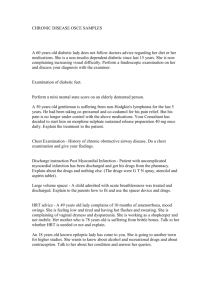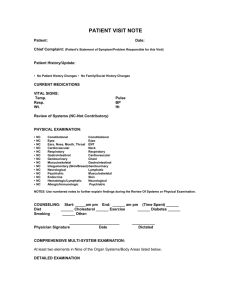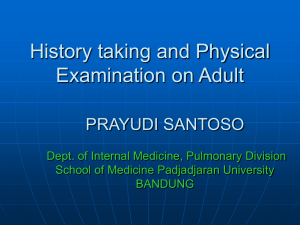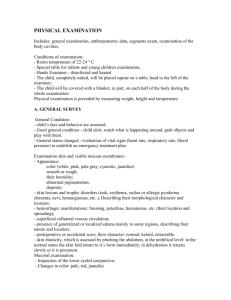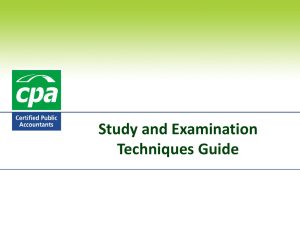gkt clinical skills: physical examination patient educator programme
advertisement
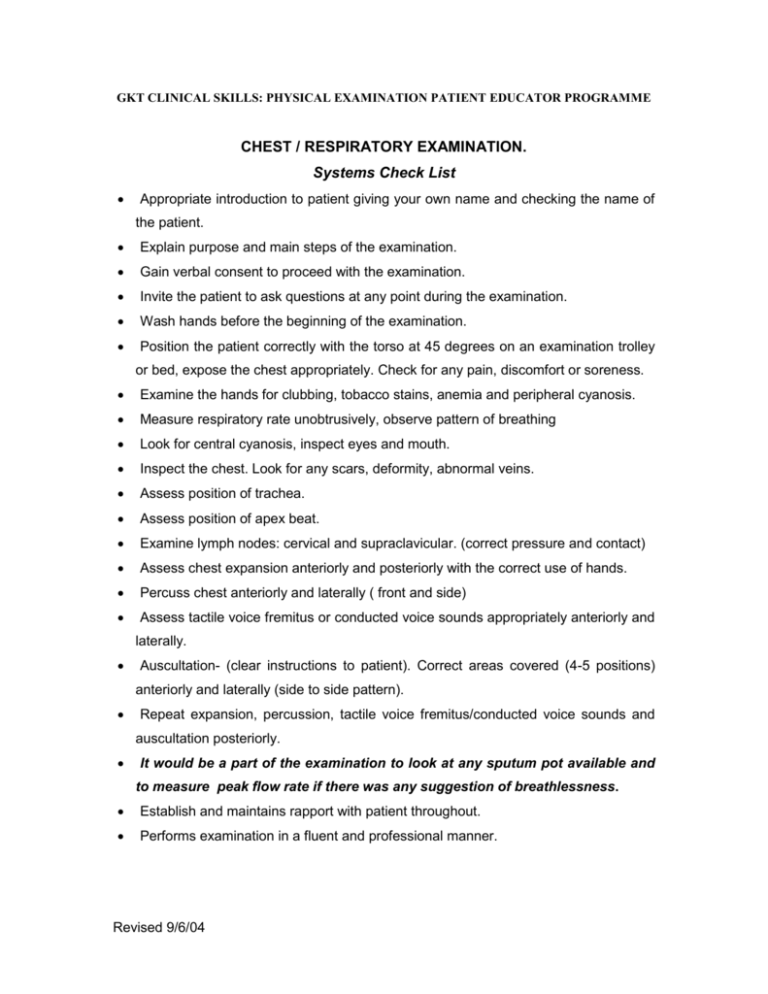
GKT CLINICAL SKILLS: PHYSICAL EXAMINATION PATIENT EDUCATOR PROGRAMME CHEST / RESPIRATORY EXAMINATION. Systems Check List Appropriate introduction to patient giving your own name and checking the name of the patient. Explain purpose and main steps of the examination. Gain verbal consent to proceed with the examination. Invite the patient to ask questions at any point during the examination. Wash hands before the beginning of the examination. Position the patient correctly with the torso at 45 degrees on an examination trolley or bed, expose the chest appropriately. Check for any pain, discomfort or soreness. Examine the hands for clubbing, tobacco stains, anemia and peripheral cyanosis. Measure respiratory rate unobtrusively, observe pattern of breathing Look for central cyanosis, inspect eyes and mouth. Inspect the chest. Look for any scars, deformity, abnormal veins. Assess position of trachea. Assess position of apex beat. Examine lymph nodes: cervical and supraclavicular. (correct pressure and contact) Assess chest expansion anteriorly and posteriorly with the correct use of hands. Percuss chest anteriorly and laterally ( front and side) Assess tactile voice fremitus or conducted voice sounds appropriately anteriorly and laterally. Auscultation- (clear instructions to patient). Correct areas covered (4-5 positions) anteriorly and laterally (side to side pattern). Repeat expansion, percussion, tactile voice fremitus/conducted voice sounds and auscultation posteriorly. It would be a part of the examination to look at any sputum pot available and to measure peak flow rate if there was any suggestion of breathlessness. Establish and maintains rapport with patient throughout. Performs examination in a fluent and professional manner. Revised 9/6/04


